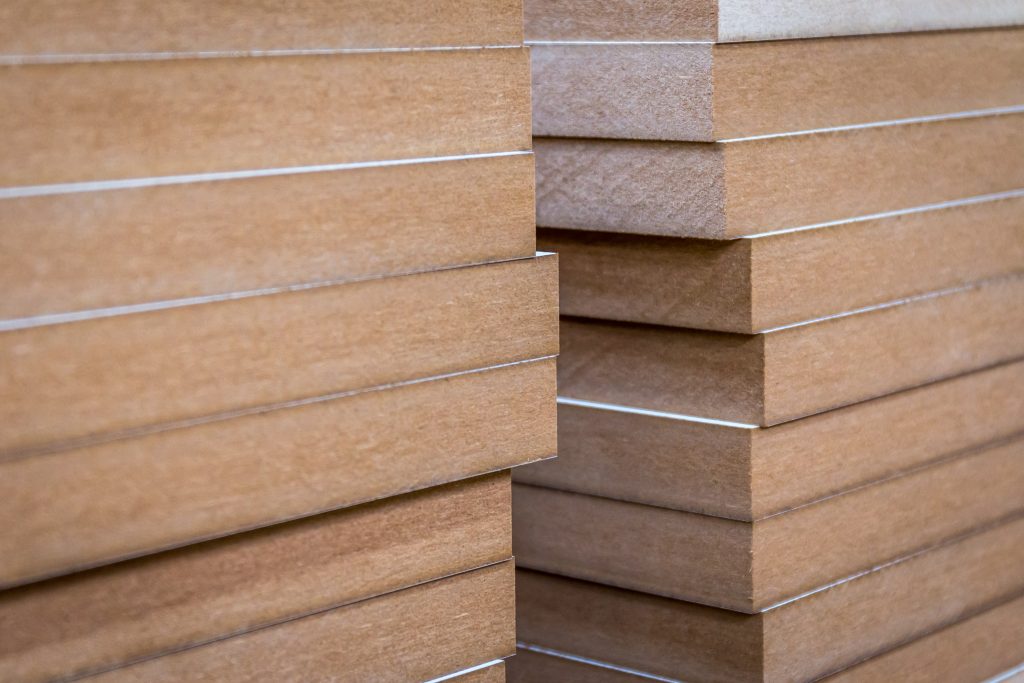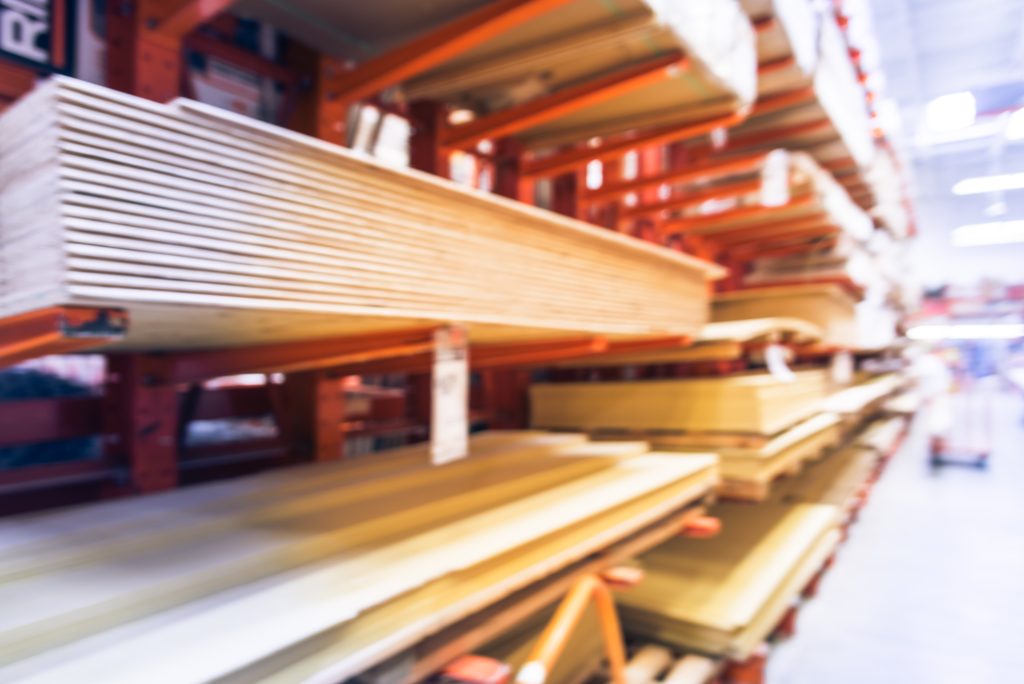MDF vs Plywood: All You Need To Know
MDF vs Plywood - Know The Difference
Of all the wood composite materials available for builders and carpenters today, there are two that stand out above the rest: MDF vs plywood. Both of these versatile wood panels are renowned for their versatility and affordability, with both products typically being available in a range of different thicknesses and dimensions.
However, if you have compared either MDF vs plywood before, then you may already know all too well that both of these wood materials have their preferable applications, even though they are both lauded for their versatility. Knowing where plywood and MDF both perform at their best is vital for getting the most out of your next woodworking or construction project.
To help, our materials experts here at Cabinet Timbers will be outlining in detail all the pros, cons, and best uses between MDF vs plywood. Read on to learn which wood panel materials are best suited to your next woodworking or construction project.
Article Contents between MDF vs Plywood:
NEED WOOD PANELS?
No stress, we're here to help. Fill out the form below for a free quote and consultation with our experts.

Understanding MDF
Considering what is MDF (or ‘medium density fibreboard’) is a wood product that’s produced by breaking wood materials down into fibre particles. These wood fibres are then mixed with resin and then pressed into wooden sheets or boards. The resin acts almost like a glue, preventing MDF boards from becoming overly porous and susceptible to degradation.
Pros of working with MDF
- Cheaper than other wood composite materials – as MDF is manufactured using wood fibres. This makes MDF one of the most affordable wood panel materials available on the market today.
- Easy to cut and shape – because MDF possesses no wood grain, this wood material comes totally free of knots and other faults. This makes MDF far easier to cut and shape, compared to solid wood and other wood composite materials.
- Easy to paint, veneer, or laminate – thanks to MDF’s smooth surface that’s free of any bumps, knots, or other wood defects, this wood panel product is incredibly easy to paint, with minimal sanding required. MDF panels are also well-suited to the application of veneers or wood laminates.
Cons of working with MDF
- Weaker than solid wood – MDF is more likely to break or warp than solid wood materials. This makes it generally unsuitable for outdoor applications.
- Less flexible than solid wood – using resin as a binding material that maintains the structural integrity of MDF actually also makes MDF a far less flexible material than solid wood. This is because the resin filler makes MDF a highly dense material, so any pressure or even the driving of a nail or screw into an MDF panel may result in that panel splitting or cracking. This is why typically only square or flat furniture is made using MDF – think cupboards, bookshelves, drawers, etc.
- Can be susceptible to moisture damage – despite being a highly dense material, the wood fibres in MDF also make this material more susceptible to moisture damage than solid wood materials. Once again, this makes MDF an unsuitable material for outdoor applications.
- Releases VOCs when cut – as MDF is made using formaldehyde resin, dust produced when cutting to size or shaping MDF can cause harm if inhaled. As a result, warehouses, studios, or any worksites where MDF will be cut will require ventilation, and for workers to be fitted with masks and other PPE.
- Cannot be recycled – although MDF is typically made using recycled wood materials, the presence of resin makes MDF non-recyclable. This isn’t an issue if your MDF projects are designed to have a long lifespan, but it makes MDF a non-ideal material for products or projects with a limited lifespan.
Common applications for MDF
As MDF is best used for indoor applications, this wood material is most commonly used by furniture makers, and is particularly ideal for the production of flat pack furniture. Its ability to be painted and veneered with ease also makes MDF the preferred material for big name furniture suppliers like IKEA.
Alongside furniture and cabinetry, MDF is also used to produce composite wood flooring, shelving, speaker boxes, doors, wainscoting, and in some cases even indoor cladding for construction projects (i.e. fire retardant MDF).
Understanding Plywood
Another versatile wood material, plywood sheets are produced by glueing thin layers of wood (wood veneers or wood plies, hence the name ‘plywood’). These wood plies are bonded using a variety of glue sealants, with glue sealant grades also determining the unique qualities of plywood sheets. For instance, Type A glue sealants are applied to produce marine-grade plywood, or plywood with a higher water resistance.

Pros of working with Plywood
- Comparatively stronger than other wood composite materials – the layering of wood veneers on top of one another and in alternating grain directions, makes plywood comparatively stronger than other composite wood products.
- Available in a variety of thicknesses and grades – you can secure plywood materials in a range of different plywood grades, sheet thicknesses, and even panel sizes.
- Can possess improved moisture resistance – although plywood isn’t entirely waterproof, the application of water-resistant glue sealants can greatly improve the moisture resistance of plywood materials.
- Can be used in outdoor settings – plywood with improved moisture resistance (i.e. marine-grade plywood or exterior plywood), can actually be used for semi-exposed exterior or outdoor applications.
- Looks more like real wood – as plywood veneers are cut directly from raw timber, plywood showcases authentic wood grain patterns. This ensures that your plywood panels look more like real wood in comparison to MDF, particle board, and other products that only use wood fibres.
Cons of working with Plywood
- Can be challenging to cut – although plywood can be easier to work with when it comes to driving in screws or nails, plywood sheets that have been produced using veneers with alternating wood grains can naturally be trickier to cut than other wood composite materials with no wood grain.
- Can splinter when cut – cutting plywood can expose some sharp edges and splinters.
- Painting can be time-intensive – the process of painting plywood usually includes more preparatory steps than painting MDF. This is because plywood is more likely to have natural wood defects that will need to be corrected first by sanding or using wood fillers.
- Is typically more expensive than MDF – generally speaking, the higher the plywood grade, the more you can expect to pay for your plywood products.
Common applications for Plywood
Depending on the plywood grades you’re working with, your plywood panels can be used in a wide range of applications, spanning from interior decorative applications, structural applications, and even exterior applications (i.e. ceiling cladding and other semi-exposed applications).
Some plywood made using softwood materials can also be used in furniture production. For instance, birch plywood is commonly used to craft cabinets, desks, benches and chairs, and even decorative partitions.
MDF vs Plywood: What’s the Right Material for Your Next Project?
All in all, deciding between MDF vs plywood for your next carpentry or construction project will naturally require you to consider a variety of factors. Will your finished product be installed in an interior or exterior setting? How long are you expecting to make use of your finished product? Do you need your creation to be waterproof or water-resistant? And what’s your intended budget for your project? Answering all of these questions nice and early can help you determine whether MDF vs plywood is the right choice for you.
Want to know more about the debate between MDF vs plywood, or other wood products we offer here at Cabinet Timbers? Then, have a look at our plywood guide contact our team or call us at (03) 8353 2222 for more information about our product range.
Want to read more about comparing different materials? Then, have a look at our comparative blogs to make an informed decision:
NEED BUILDING SUPPLIES?
No stress, we're here to help. Fill out the form below for a free quote and consultation with our experts.

